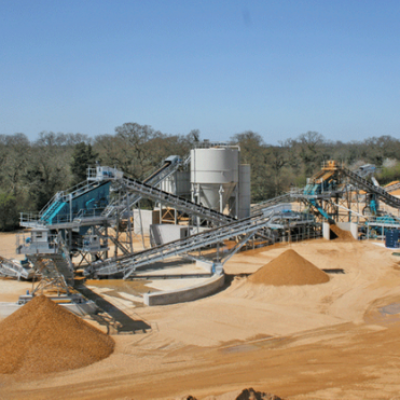

Infrastructure development and growth was expected to be the basic theme for the Union Budget 2020-21. Reason being that it is one sector that creates opportunities worth 10 times the invested amount. In a current scenario where private capex had almost dried up, most sectors are facing growth pressures and GDP growth has declined over few quarters – increased infrastructure spend was necessary. Along with infrastructure, the sector’s growth was also expected to occur in allied segments such as steel, cement and other building materials.
While CW has already provided a detailed analysis on the impact of the Union Budget announcement on the infrastructure sector, here is the expected impact on the building materials segment. While there are no direct announcements that are being made – there are many indirect announcements that will make an impact on this segment.
Demand drivers for cement
As mentioned earlier, it is an indirect beneficiary of increased allocation for the infrastructure and realty sectors. Rather, the housing and road segments are major demand drivers for cement.
The cement industry players were expecting various measures taken earlier – affordable housing and national infrastructure pipeline – to benefit cement players by way of increased consumption. However, more and more monitoring on consistent basis was recommended. Broadly, cement manufacturers were expecting around 10-15 per cent increase in budgetary allocation for key ministries such as roads, highways and railways.
Apart from this, customs duty on bags used for packaging cement is 10 per cent and the industry was expecting reduction in customs duty to 5 per cent. Eventually, helping cement companies benefit from lower packaging cost aid in improvement in operating margins.
For infrastructure projects, in the Union Budget 2020-21, the overall fund allocation for key infrastructure sectors has declined marginally (around 4 per cent) Y-o-Y to Rs 5.5 trillion, with gross budgetary support at Rs 2.7 trillion (increase of 10 per cent Y-o-Y). Just to quantify, the latter includes Rs 1.6 trillion (up 7 per cent Y-o-Y) towards roads and railways.
CW opines that increased allocation of around 9 per cent to Rs 275 billion towards PMAY (Pradhan Mantri Awas Yojna) is a positive step. Cement demand in the non-trade segment has been weak in FY2020. Increase in allocation under PMAY, interest benefit under affordable housing and infra Capex is likely to increase cement demand under the non-trade segment. Further, support to affordable housing (benefits under sector 80IBA and 80EEA) is another positive for the sector. With maximum demand coming from the housing sector, the push for affordable housing will result in some improvement in demand. As for the other spending detailed in the infrastructure sector, allocation of Rs 1.73 trillion towards the transport segment bodes well for the cement players.
Pipes manufacturers: Higher allocation for agriculture and irrigation.
With Rs 2.83 trillion allocated to agriculture and irrigation along with Rs 3.6 trillion allocated for Jal Jeevan Mission, there is expected to be good demand creation for the household pipes sector. These programmes aim to supply water to all household through pipes and as a result, it will lead to higher demand and consumption of pipes used in agriculture and irrigation as well as carrying potable water for households. Here, the action plan is to ease India's water problems, and the government plans to start with helping 100 districts. Allocation for Swachh Bharat for 2020-21 stands at Rs 123 billion. This two-budget-announcement of higher allocation is positive for pipe manufacturers such as Astral Polytechnik, Finolex, Supreme Industries and Shakti Pipes.
Metals: Expect increase in demand for flat products
Steel and cement are the basic components of infrastructure providing strength to it. With NIP at Rs 100 trillion, Rs 1.7 trillion for transportation infrastructure and other spends on infrastructure developments, we also expect the demand for steel to increase.
The increased allocations would lead to higher steel consumption. To be specific, CW expects an increase in demand for long products. Apart from this, it is proposed to expand the national gas grid from the present 16,200 km to 27,000 km. This will also result in good demand creation for the Indian metals sector. In a further announcement, the Union Budget has proposed to increase the basic customs duty on CP Coke (raw material for aluminum) reduced from 10.0 per cent to 7.5 per cent. This stands beneficial for aluminium players.
Although not considered under the metals segment, lead also forms a major part of mining. In the Union Budget, basic customs duty for various lead products has been increased to 7.50 per cent from 5 per cent. This bodes well for the Indian lead manufacturers. Overall the Budget announcement seems to be marginally positive for steel players such as SAIL, Tata Steel, JSW Steel and JSPL.
Electrification of 27,000 km tracks, support for the power sector (especially DISCOM) also bodes well for few of the wire manufacturers.
Focus on warehousing is another positive factor for the building material segment. The Budget proposes to create warehousing, in line with Warehouse Development and Regulatory Authority (WDRA) norms. The government will provide Viability Gap Funding for setting up such efficient warehouses at the taluka level. The Finance Minister stated that, this can be achieved, where states can facilitate with land and are on a PPP mode. Food Corporation of India (FCI) and Central Warehousing Corporation (CWC) shall undertake such warehouse building on their land too.